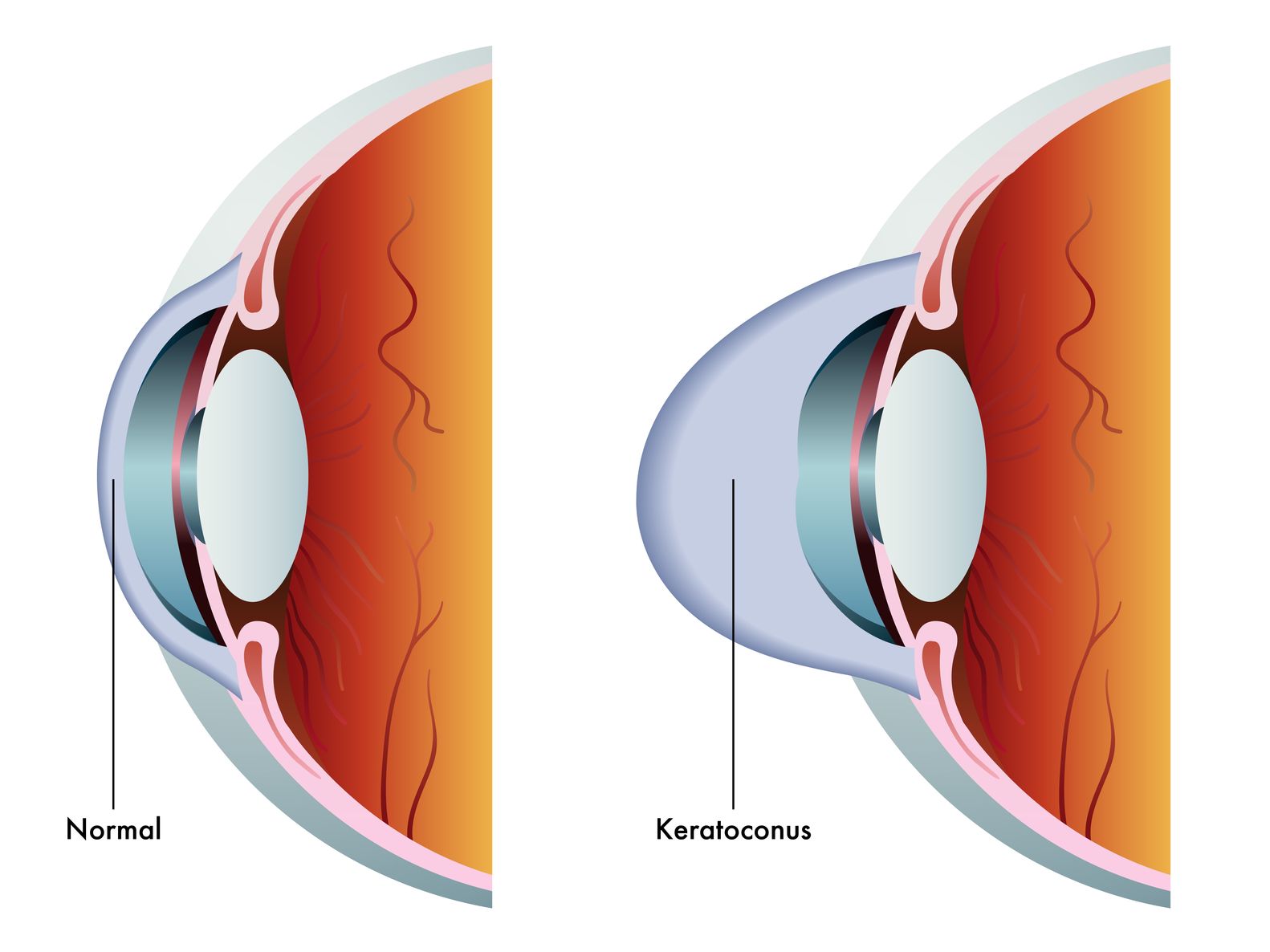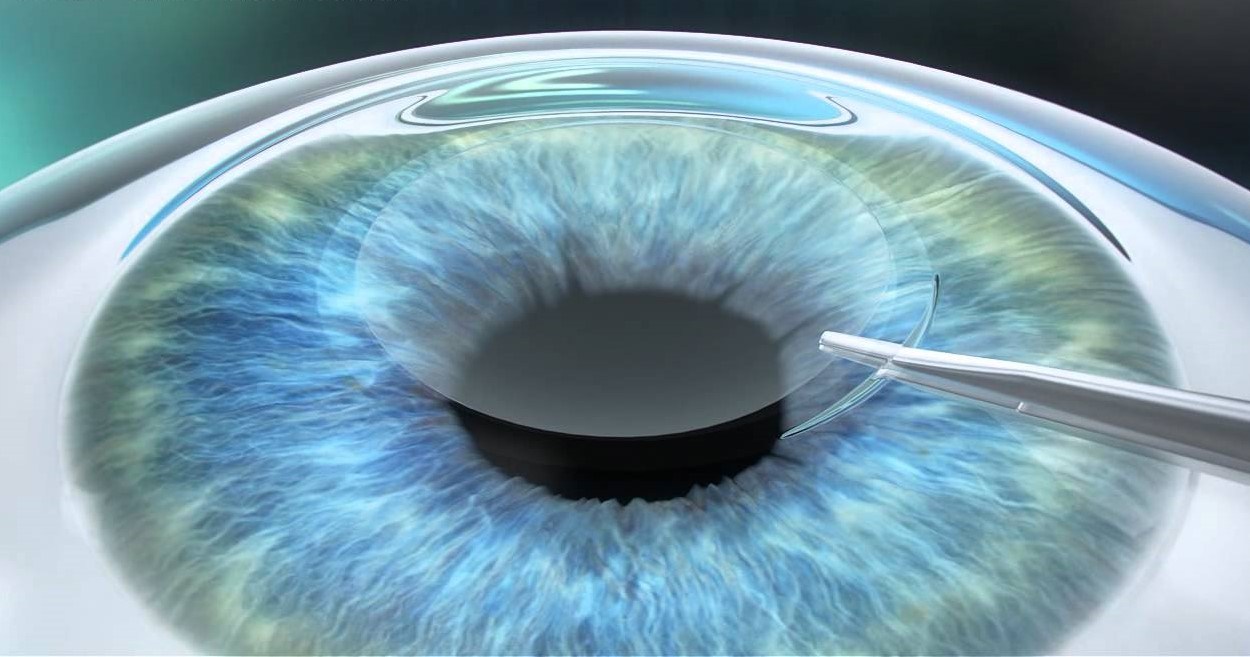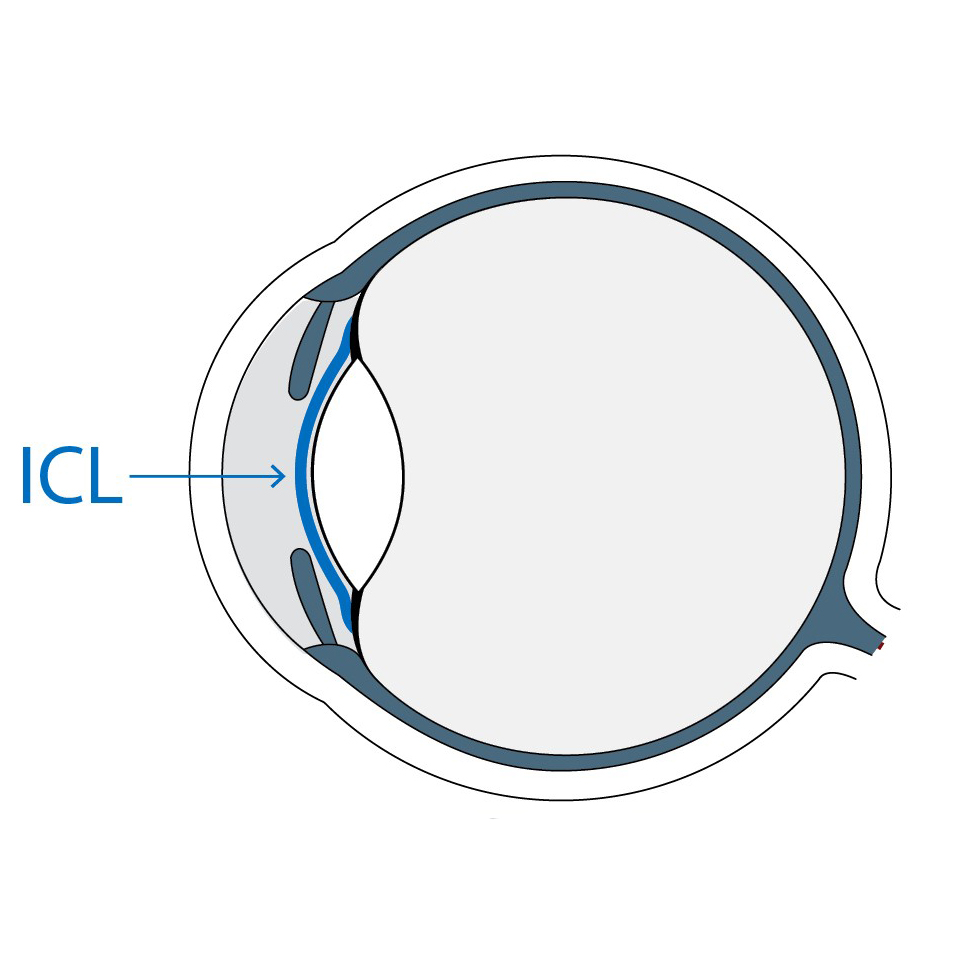Vision Correction Options
Eyeglasses
Eyeglasses are the oldest and most common vision correction option. A corrective lens is a lens worn in front of the eye, mainly used to treat myopia, hyperopia, astigmatism, and presbyopia. Glasses or "spectacles" are worn on the face a short distance in front of the eye. Nowadays, there are corrective lenses that can even protect your eyes from the sun's ultraviolet radiation.
Contact Lenses
A contact lens is a hydrophilic (water-loving) disc that floats on your cornea. Like prescription glasses, a contact lens is specifically shaped to focus light into the retina of your eye (and to fit your eye). But because the lens covers your cornea, it actually corrects your entire field of vision (unlike glasses, which you can see over and under). Contact lenses float on the tears that bathe the eye when you blink - so you want to keep your eye well-moisturized when you're wearing contact lenses.
Refractive Surgery
LASIK
LASIK is an acronym and actually stands for Laser in-situ keratomileusis, which is the most commonly performed type of laser eye surgery. This eye surgery procedure is generally safe, effective, and has very few side effects. LASIK is a great option for many individuals considering laser vision correction for a variety of very personal and professional reasons. LASIK may not promise perfect vision, however; it is a highly successful procedure that can at the very least reduce a person's dependence on glasses or contact lenses. The lifestyle benefits can be tremendous for active and social people. These benefits can bring great value and ease in life. If you are an active person please feel free to consult our LASIK coordinators if you have questions about life after LASIK. They will be happy to answer any questions that may affect your lifestyle or any questions about the LASIK eye surgery procedure itself.
Visian ICL
Not everyone is a candidate for LASIK eye surgery. Sometimes people have thin corneas or excessive dry eyes and it makes them simply not a good candidate for LASIK eye surgery. Your eye doctors will examine your eyes and determine what the best vision correction option should be. It is our goal at OPN to make sure that you know all your options. Depending on your refractive error we may suggest different types of vision correction. The Visian ICL represents a great option for many patients that may not be good LASIK candidates but also those that have high levels of myopia.
Visian ICL also called the Implantable Collamer Lens. Collamer Lens), created by STAAR® Surgical Company, is a phakic intraocular lens (IOL) for the treatment of myopia and other refractive errors.
PRK (Photorefractive Keratectomy)
PRK (Photorefractive Keratectomy) differs from LASIK vision correction in that it does not involve the creation of a flap to reshape the cornea. The advantage of PRK is that patients who are not candidates for LASIK may still regain better vision through refractive laser eye surgery. However, PRK does require a longer recovery process, and vision is not restored as quickly as LASIK vision correction. Also, a temporary, protective contact lens is worn after PRK to reduce postoperative discomfort.
LASEK
LASEK (laser sub-epithelial keratomileusis), epi-LASIK (epithelial LASIK) and ASA (Advanced Surface Ablation) are variations of PRK. LASEK involves removing the surface (epithelial) layer of cells using the same solution used in PRK. Instead of discarding the cells, the sheet of cells are replaced after the excimer laser treatment.
Bladeless LASIK
When LASIK first arrived as a laser vision correction procedure, a microkeratome was used to create the corneal flap. (To learn more about traditional LASIK please visit our LASIK eye surgery page) Over the years ophthalmologists have found that when complications arise from LASIK they are typically from a poorly created corneal flap. Now we have femtosecond lasers that can create the corneal flap and we refer to this as Bladeless LASIK.
Wavefront LASIK
Wavefront Custom LASIK is the most advanced laser technology available. Custom LASIK laser treatments are based upon the unique visual characteristics of your eye. Up until now, with glasses, contacts and conventional LASIK surgery, corrections were quite similar for each type of prescription. Custom LASIK involves measuring the eye from front to back with a special laser, using what's called "wavefront" technology, to create a three-dimensional (3-D) image of the eye. The information contained in the Wavefront-map guides the laser in customizing the treatment to your individual visual system.
Monovision
Monovision is a unique method of treating vision when people experience visual problems at both close and far distances or when presbyopia causes accommodation issues. Presbyopia occurs as part of the natural aging process. The eye's crystalline lens loses its ability to bring close objects into clear focus. Monovision used to involve wearing one contact for close vision and the other contact for far vision. Not all patients like monovision because it requires some adjustment and training of your eyes, however; most patients are able to make this adjustment. Patients that suffer from presbyopia often use bi-focal glasses as a treatment option. Bifocal contact lenses are now available. Monovision LASIK can also be an option. The FDA has approved CustomVue Monovision LASIK.








